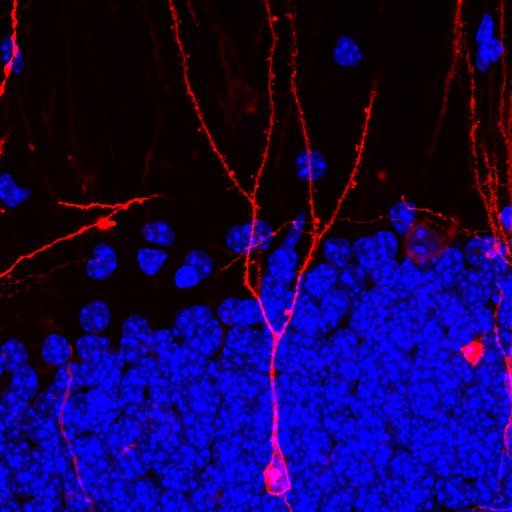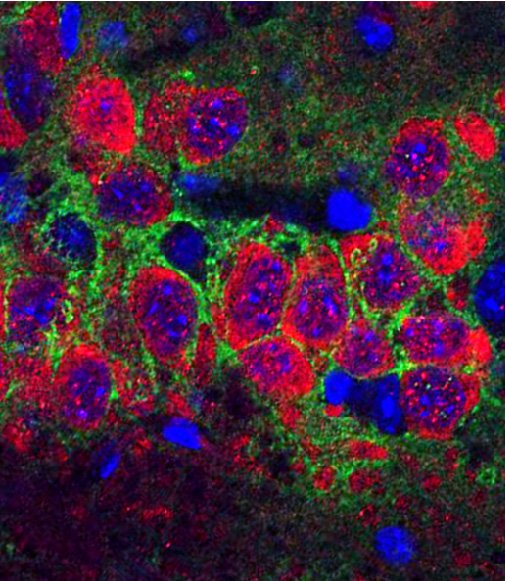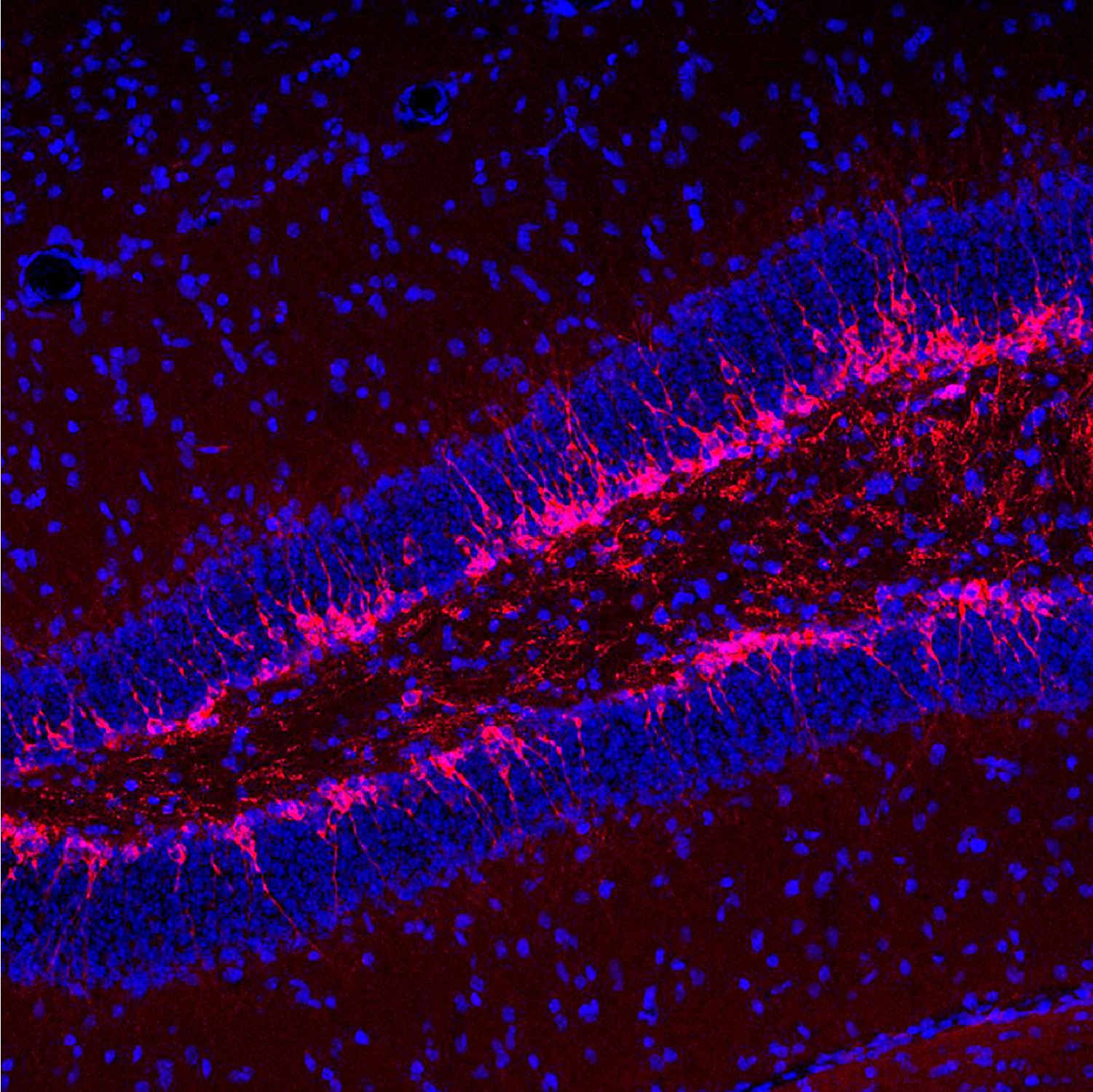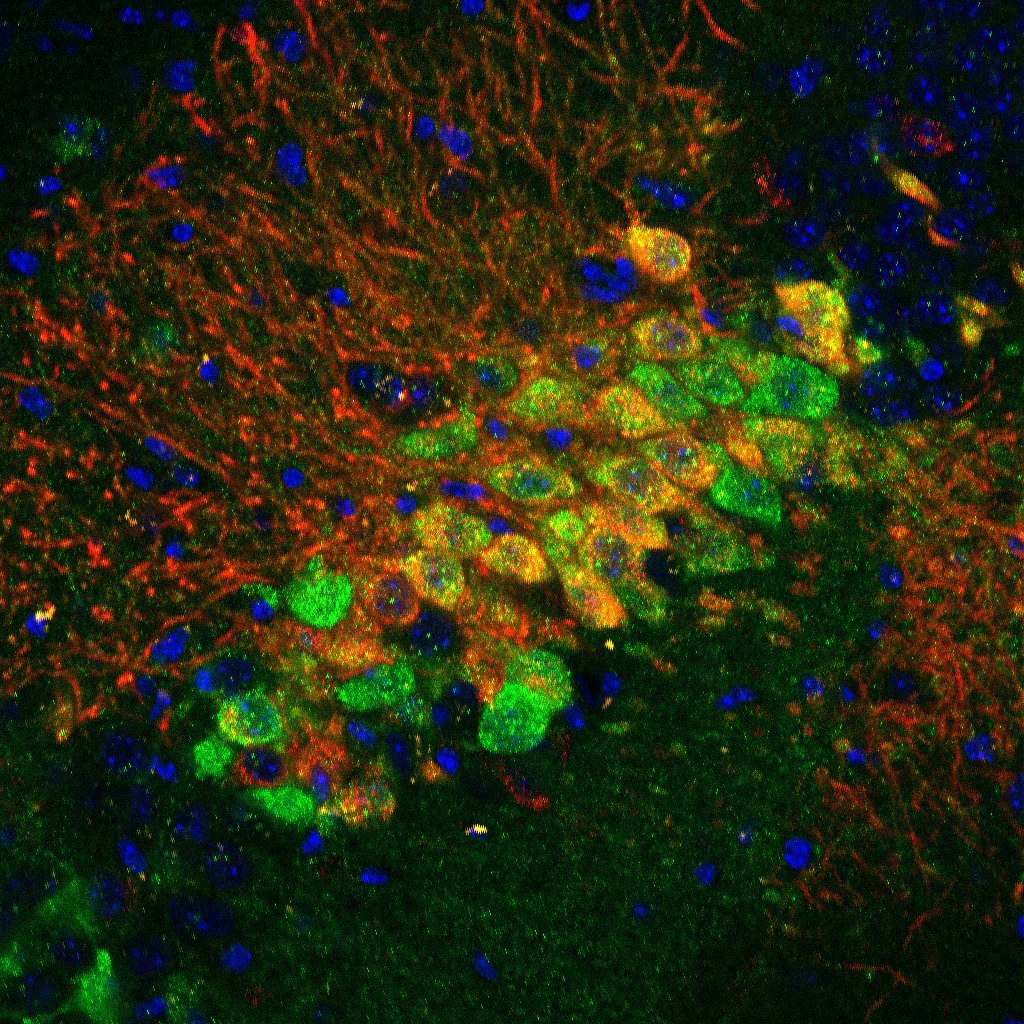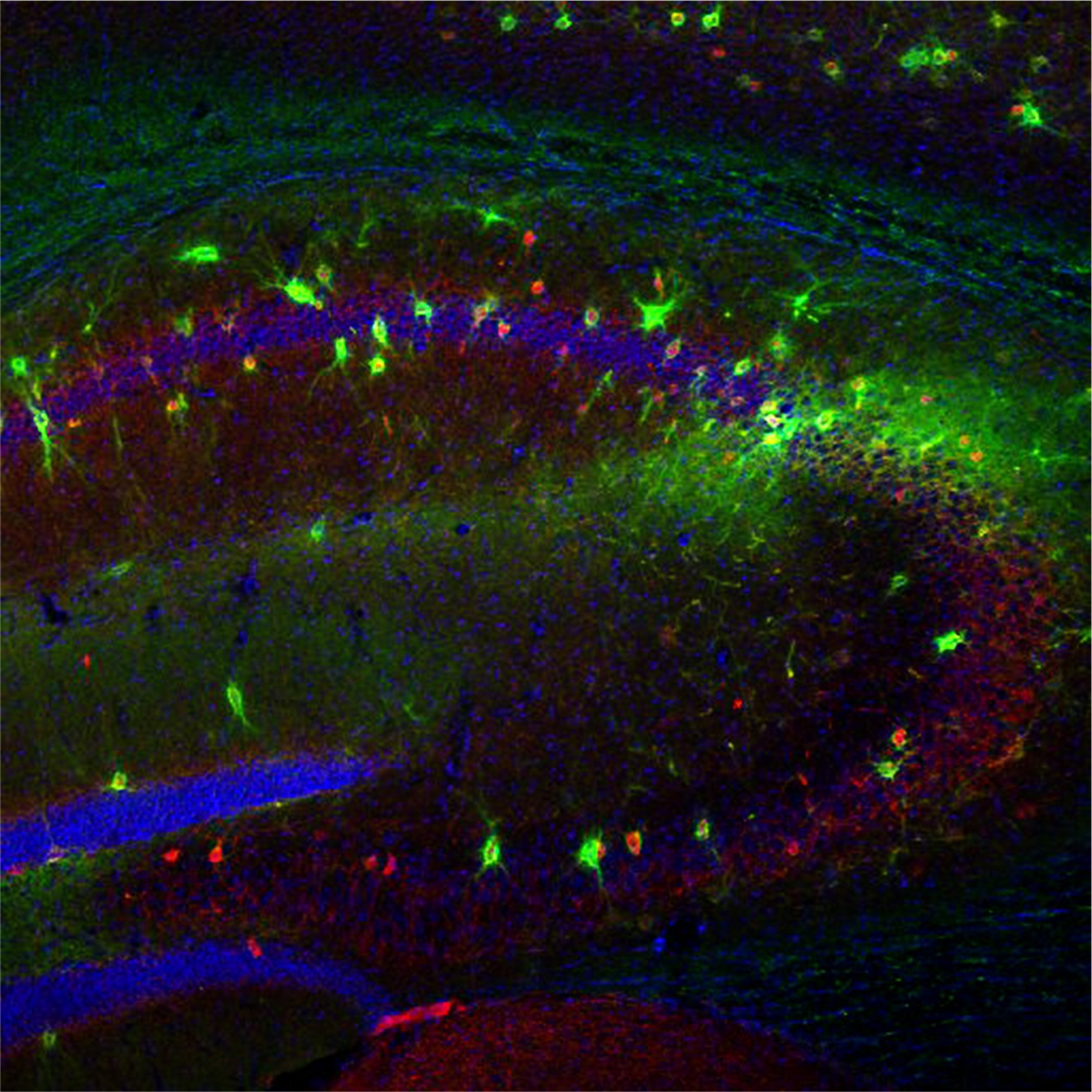What are the mechanisms by which neuronal and nonneuronal forms of structural plasticity contribute to social memory in the healthy and diseased brain?
To answer this question, our lab uses a variety of pharmacologic, transgenic, viral, and environmental manipulations combined with histology, in vivo electrophysiology, and behavioral analyses. We focus on the hippocampus, a brain region that not only plays an important role in social memory, but also undergoes substantial plasticity into adulthood. Ongoing projects explore adult-born granule cells, glia, and perineuronal nets in mediating hippocampal plasticity and social memory with the ultimate goal of our work to understand the impact of the collective interactions of these cells and extracellular structures.

